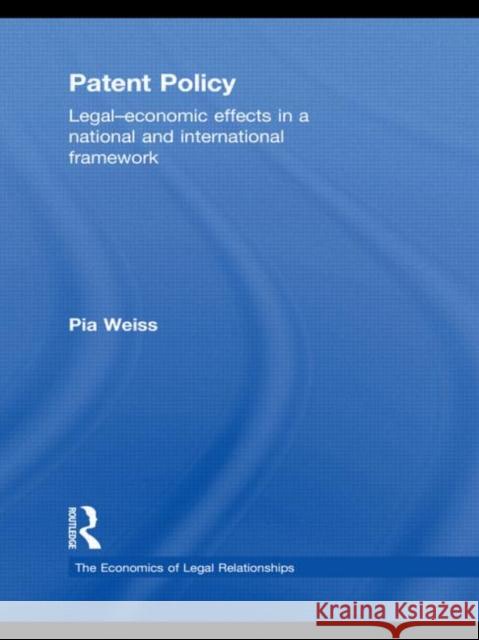Patent Policy: Legal-Economic Effects in a National and International Framework » książka
Patent Policy: Legal-Economic Effects in a National and International Framework
ISBN-13: 9780415481052 / Angielski / Twarda / 2010 / 256 str.
Patent Policy: Legal-Economic Effects in a National and International Framework
ISBN-13: 9780415481052 / Angielski / Twarda / 2010 / 256 str.
(netto: 625,86 VAT: 5%)
Najniższa cena z 30 dni: 105,05
ok. 22 dni roboczych.
Darmowa dostawa!
Intellectual property rights have become increasingly important for our modern economies in recent years. Although the entire patent system has a profound effect on the decision of firms of whether to conduct research and at which volume, patent law is the heart of the entire patent system. Therefore, this book focuses on the economic effects of certain provisions in patent law by using economic models dedicated to patent policy. The first part of the book presents a brief overview over the history of patent systems and introduces the main components of modern patent systems. A short introduction of the principal provisions of US patent law constitutes the centre of the subsequent analysis as it serves as a link between law and economics. The second part presents core economic models for central provisions, collecting the most fundamental results in a national framework in the field of literature. Part three is concerned with selected provisions of patent law in an international framework. It provides valuable insights into the situation of developing countries which are the chief recipients of technology transfers. Patent Policy will be of interest to researchers interested in the field of modelling patent policy. It can be also used as supplementary text in courses in Industrial Organization, Innovation Economics and Law and Economics.
There exists a vast body of literature on all aspects associated with patents, including innovation, patent policy instruments, licensing, and the tension between patent policy and competition policy. However, most of the works focusing on patent policy are only available as journal articles or as reprints in book collections. This book bridges that gap in presenting a systematic overview of models dedicated to patent policy.
Firstly, the reader is presented with an extensive survey of the history of patent systemsand modern patent law. Secondly, the book aims to present existing models of patent policy in a systematic way.
Lastly, the external effects associated with the creation of knowledge are not restricted to a nation's boundaries. Two examples are thus presented, where virtually identical countries choose different policy instruments, emphasizing the need for patent policy in open economies to be more extensively studied.











